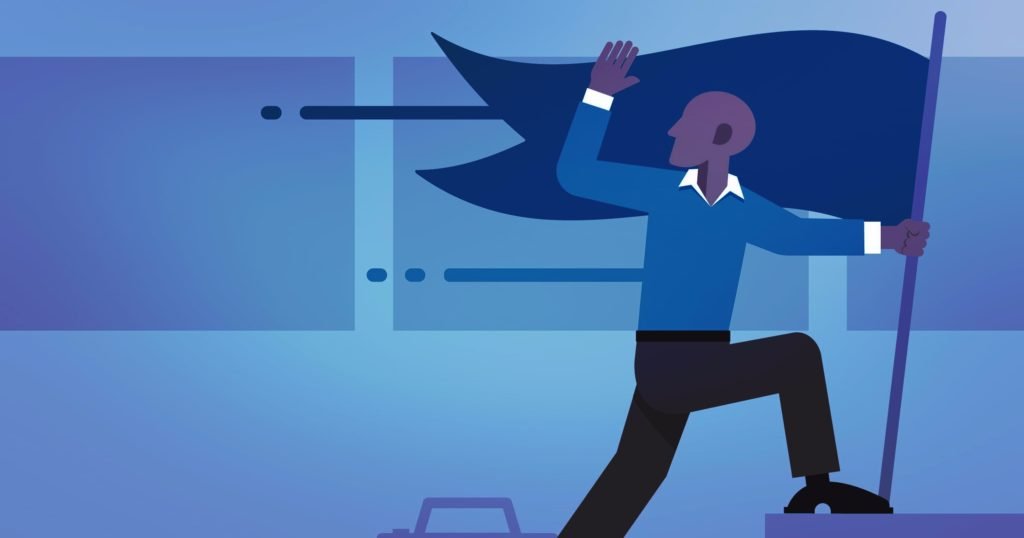Learn and Study, What is the Role of Group Influence in Consumer Behavior?
So, if its true that individualism is dead and that consumer behavior is dominated by the influence of groups? There is no doubt consumer behavior is heavily influenced by groups. Individuals are always striving to conform to group behavior and to please others and this influences the purchase choices that they make. The influence of groups also helps to establish trends in lifestyle, fashion, and the assimilation of new products, into the lives of consumers. Also learned, Group Influence on the Consumer Behavior, What is the Role of Group Influence in Consumer Behavior?
The notion of ‘virtual communities’ has been around ever since the inception of the internet. Whereas people used to meet and form communities geographically, the internet allows groups of like-minded people to meet virtually through communities based on, for example, online chat rooms and forums. Here individuals, who share common interests, can make contact with each other without any geographic restrictions. The interaction between members of such groups tends to be more uninhibited that it would be in a non-virtual group, as anonymity allows people to say things to other members of the group they maybe wouldn’t say face-to-face.
Specialist social networking sites have emerged in the last ten years and now have huge numbers of members. Facebook, for example, has over 2 billion members globally and can wield enormous power over the brand consumption choices of those members. An example of the demonstration of this power was in 2007 when ninety-three different Facebook groups, containing over 14,000 members in total, petitioned for Cadbury’s Wispa chocolate bar, which had been withdrawn in 2003, to be re-introduced. Cadbury listened to what these Facebook groups were saying and decided to relaunch Wispa in late 2007.
Many large corporations have now taken a reactive, rather than proactive, stance in terms of their online social network marketing by setting set up their own ‘brand communities’. Tesco has used data from its Clubcard scheme to establish a brand community of families with babies and toddlers. When Tesco discovered that this group of regular shoppers did not think that they could place their trust in the Tesco brand for buying baby and toddler products it established the online Tesco ‘baby and toddler club’.
Membership of the club confers various benefits on families with babies and toddlers including double Clubcard point, free parking spaces right next to store entrances, and a free parenting advice magazine. This brand community initiative raises the levels of trust in the Tesco brand for baby and toddler products and increased Tesco’s market share.
Amazon.com is not just a successful online retailer, it has also created a virtual community of its customers where they can not only buy a wide range of books and electronic products but they can also engage with the Amazon brand. Customers are able to write and submit book reviews and post messages on a forum, amongst other activities.
They can even engage with their favorite authors through email addresses supplied on Amazon.com. If a consumer enters the relevant details then Amazon will also send reminders about the birthdays of family and friends and make recommendations for gifts based on past browsing experience,. Equally, every time a registered user logs on to the site he or she is presented with purchasing ideas that reflect their expressed tastes that have been demonstrated through previous online buying behavior.
Another influential group is consumer ‘tribes’, who are characterized by their active and enthusiastic consumption behavior, which is sometimes extreme in nature. They will actively resist the messages thrust at them by marketers and tend not to consume brands and products without exerting some influence of their own over those brands and products.
They will add to them and struggle with them, altering the actual, or perceived, nature of the brand or product until it blends seamlessly with their own lifestyle. Consumer ‘tribes’ have also flourished online especially through one of the most talked about online phenomena of recent times, namely ‘blogging’. Bloggers, with no particular experience or expertise, are able to disseminate all kinds of messages about brands with impunity.
They wield incredible power over the uniform, tribes of postmodern consumers and their blogging efforts mean that brands are no longer fully able to control their marketing communications activity. However, some of the more savvy marketers have recognized this threat to the integrity of their brand messages and have responded with their own blogs. For example, the internet service provider, AOL, used the medium of blogging in an attempt to defend its brand against tribes of malicious bloggers.
The company’s ‘Discuss’ blog urged consumers to reassess their opinions of its broadband service by probing views within different consumer groupings to stimulate interest in topics that would not usually be included in the content of offline marketing activity. The ‘Discuss’ blog was a great success and achieved over one thousand postings and more than one hundred thousand hits in its first few weeks online.
Each broad culture will contain ‘sub-cultures’, which are differentiated by religious beliefs or race, or can be groups of people who simply have the same values, attitudes and beliefs. The influence of ‘sub-cultures’ over consumer behavior thus: members of a subculture often signal their membership by making distinctive and symbolic tangible (purchasing) choices in, for example, clothing styles, hairstyles and footwear.
A clearly identifiable sub culture is ‘youth culture’, which exhibits distinctive attitudes and purchasing behavior and is widely recognized by marketers as a highly valuable global market segment. Members of the youth culture group will often be highly aware of high profile and heavily advertised brands and will have positive and aspirational attitudes to purchasing such brands in order to signal their membership of the subculture.
Style is perhaps the single largest indicator of membership of ‘youth culture’ and has been evidenced by the past emergence of sub groups of youth culture, such as hippies, mods, rockers and punks. Although these groups wanted to be seen as rebellious they in fact depended, ironically, on consumer goods, such as clothing and music, to re-enforce their identities.
The association of youth sub culture with music has long been exploited by marketers. For example, Brown and Williamson, manufacturers of the ‘Kool’ brand of menthol cigarettes, started sponsoring music concerts in the 1970’s because of the ability of such events to communicate with adolescents. In 2004 Kool’s marketers felt that music would be a powerful medium for conveying emotional messages about cigarettes and building a brand image and so the ‘Kool Mixx’ concerts were launched. These targeted young American males, by exploiting the new musical genre of ‘hip-hop’, which had wide appeal with youth culture.
There are other groups that influence young people as they become more autonomous from their parents. So called ‘reference groups’ play an increasingly important role in the development of young people. A reference group can be defined as an actual or imaginary individual or group conceived of having significant relevance upon an individual’s evaluations, aspirations, or behavior. Most individuals are adverse to behavior that goes against the consensus of their reference group or groups.
For example teenagers, as consumers, are more relaxed when they are with members of a reference group than when they are on their own. When a consumer lacks confidence in his or her purchase decision-making ability, they look to their reference group for guidance and advice. Reference groups for teenagers will typically include family members and friends as well as their music and sports idols.
The concept of ‘self’, is a psychological concept that is involved with motivating consumer behavior and an individual’s ‘self-esteem. A favorable self-esteem is generally regarded as being crucial to success in life. Teenagers, particularly, are likely to be very aware of their self-esteem, or lack of it, due to both the physiological changes taking place in their bodies, at and beyond puberty, and the attitudes, opinions, and beliefs of others.
In consumer behavioral terms these esteem needs can be the motivation for the acquisition of so called ‘luxury’ products, such as branded fashion and clothing, which can help a young person gain recognition and status within his or her key reference groups For example, teenage school children will often connect with reference groups of their peers. Members of these reference groups may decide to dress in particular kind of way and often will wear items of designer-brand footwear and clothes.
These teenagers consumers will seek to own the brands that their heroes in sports, film music own. The principle being that, by owning such brands, they can improve, by association, both their self esteem and their standing in the reference group. ‘Tag-Hauer’ is a good example of a brand that exploits this need for an association to with a celebrity reference group Brad Pitt and Lewis Hamilton are two of the celebrities that endorse the Tag-Hauer brand through advertising which is principally aimed at young adult males.
Despite the huge weight of evidence to support the claim that individualism in consumer behavioral terms is dead, and that the age of the group is with us, it should be remembered that individuals still retain the ability to make their own decisions about what they buy and who they buy it from. Highly impulsive, individual buyers are likely not to reflect on their purchase decisions and emotions will be a prime force in attracting them to a particular purchase.
Individualism is influenced largely by culture and occurs most frequently in those cultures where it is most highly-prized, such as in the USA. Here it is reckoned that impulsive consumer behavior accounts for over $4 billion of sales annually and over 80% of all purchases in some product categories, for example, magazines and sweets.
In conclusion, it can be seen that regardless of nationality, race or gender, the influence of the group over consumer behavior is highly significant. The emergence of the internet has caused a huge surge in group influence especially amongst teenagers and young adults. These individuals are also highly susceptible to the influence of reference groups and will often seek the approval of their peers before making a purchasing decision. Marketers have not just responded to the demands of virtual groups of consumers but have also risen to the challenge of influencing group behavior themselves.
Again, the internet has been of assistance in helping them to deliver their brand messages and respond to consumer needs and wants through independent social networking sites, such as Facebook, and, increasingly through the established of their own brand communities. None of this is to say, however, that individualism is necessarily dead as evidenced by the fact that many consumers still make impulsive buying decisions without reference to any group behavior.




